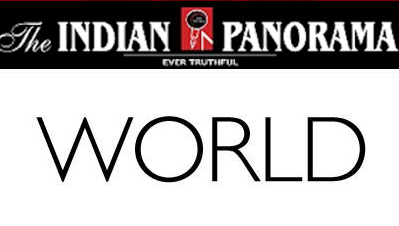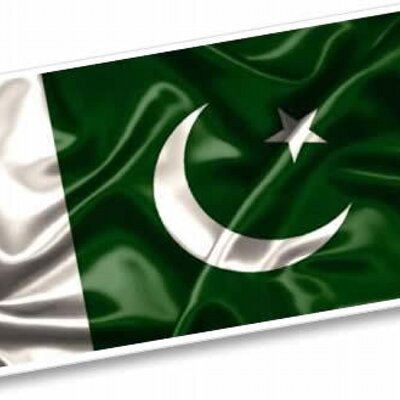

The legitimacy of its institutions, including the unity government and the security forces, must be enhanced
First week of June provided a grim reminder of the worsening security situation in Afghanistan. A suicide attack on May 31 in the heart of Kabul, with a truck bomb containing 1,500 kg of explosives, has left more than 150 persons dead and hundreds injured.
No one has claimed responsibility and the Taliban issued a statement denying any involvement. Afghan intelligence have blamed the Haqqani network working together with the Pakistani Inter-Services Intelligence, a charge vehemently rejected by the Pakistani government.
Two days later when over a thousand people collected near the site, the mood of the demonstrators was antigovernment. Banners and slogans were raised calling on the government to resign. As the demonstrators moved towards the presidential palace, police used water cannons and tear gas to break up the crowd. According to the police, some protesters were armed and began shooting, forcing the police to retaliate. Half a dozen protesters were killed. Among them was Salim Izadyar, son of Mohammed Alam Izadyar, a prominent Tajik and the Deputy Speaker of the Meshrano Jirga (Upper House).
Fault lines exposed
The following day, on June 3, at Izadyar’s funeral, three suicide attackers blew themselves up killing more than 20 and injuring over a hundred mourners. Among those present were Chief Executive Abdullah, Foreign Minister Salahuddin Rabbani and former intelligence chief Amrullah Saleh, who escaped any injuries. A fourth attacker was nabbed and has admitted to having been recruited and trained by the Taliban in Quetta.
Coming in quick succession, these events have exposed the weaknesses of the National Unity Government (NUG), emboldening the opposition. Dr. Abdullah has appealed for calm and said that if it helps, he is ready to step down. It is clear that his support base has eroded. Meanwhile, Foreign Minister Rabbani hinted at conspiracies. Protesters have pitched a tent outside the hospital in the area, which has become a focal point for speeches by Tajik leaders, including former Vice- President Ahmad Zia Massoud, who hold the Pashtun-dominated government of President Ashraf Ghani responsible. The Tajik-led Jamiat is now reaching out to other ethnic groups, Uzbeks and the Hazaras. Meanwhile, Uzbek leader and Vice President Abdul Rashid Dostum left for Turkey last month for ‘medical treatment’ following growing public criticism after his security guards sexually assaulted a political rival.
The NUG agreement, concluded in September 2014, with strong backing of the U.S., was more than just a means of resolving the electoral dispute between the two candidates, Ashraf Ghani and Abdullah. It was a power-sharing arrangement between the Pashtuns who have traditionally ruled Afghanistan and the non-Pashtuns (Tajiks, Uzbeks and Hazaras). The creation of the post of the Chief Executive, to be converted into the position of a Prime Minister within two years, was an attempt at moving away from the highly centralized presidential system introduced in 2003 towards a more federal arrangement. In 2003 too, the Northern Alliance had demanded the position of a PM but had to be content with the compromise of a President and two Vice-Presidents on the tacit understanding that the two Vice-Presidents would come from the smaller ethnic groups. The U.S. had strongly backed the idea of a strong American-style presidency, overlooking the fact that the institutional checks and balances of the U.S. system were missing in the war-ravaged country.
The constitutional amendment for converting the position of the CEO into that of PM is still pending as parliamentary elections which were due in 2015 have not taken place; these elections were to be preceded by changes in the election procedures which were to be worked out by a special commission that would, in turn, be approved by a newly constituted Independent Election Commission. With this process having come to a halt and a change of administration in Washington, differences between President Ghani and Dr. Abdullah today can no longer be patched up. They keep erupting, reflecting a governance structure that is both under internal strain and external attack by the Taliban. The visible antigovernment sentiment is a worrying sign.
Deteriorating security
There is talk about pushing through a parliamentary election next year and advancing the presidential election by a year (it is due in 2019) to save costs. However, the deteriorating situation raises questions about the feasibility of elections. Today, less than 60% of Afghanistan’s territory is under government control; the rest is either contested by or under the Taliban. While putting its weight behind the NUG in 2014, the Obama administration also backed the idea of ‘a lasting political settlement between the Afghan government and the Taliban’. To this end, he announced that 8,400 U.S. troops would stay on in Afghanistan (together with another 5,000 from NATO partners) in an ‘assist, advise and train’ mission.
The Trump administration has yet to announce its policy though indications are it might authorize an increase of 3,000-5,000 in U.S. troop levels. This is the figure mentioned by General John Nicholson in his testimony to the U.S. Congress in February and has been supported by both Defense Secretary Jim Mattis and National Security Adviser H.R. McMaster. Gen. Nicholson described the current situation as a ‘stalemate’ which needed to be tilted in favor of the Afghan security forces. Like his predecessors, he too held Pakistan responsible for the Taliban’s successes, pointing out that eliminating external sanctuary and support is essential to the success of the mission. Yet, other than calling for a ‘holistic response’, he failed to specify what this would entail.
Since the U.S. has been unable to change Pakistan’s behavior despite having provided nearly $34 billion in economic and military assistance since 2002 accompanied by occasional threats to suspend or withhold the funds, enhancing capability of the Afghan security forces remains the only option.
This means strengthening the Special Forces in both the Army and the Police as these are most effective in fighting the insurgency and providing air power and artillery. The U.S. provides $3.4 billion out of the NATO’s annual support of $4 billion for the Afghan National Security Forces. In addition, it spends nearly $18 billion on maintaining its troop presence (it costs slightly more than $2 million a year to deploy a U.S. soldier in Afghanistan). In comparison, raising and equipping a brigade of Special Forces would cost a billion dollars a year.
Therefore Gen. Nicholson’s idea of a slight increase in international troop presence can only work only if it is coupled with practical ways of enhancing Afghan capabilities.
Mirage of reconciliation
In recent years, numerous initiatives to bring the Taliban to the negotiating table have been attempted. A Taliban office in Doha was intended to get the Taliban negotiators away from the ISI’s control but turned out to be a nonstarter.
The four-country quadrilateral group involving China along with Pakistan, the U.S. and Afghanistan came to an abrupt end when it was revealed that Mullah Omar was no longer alive and had died, possibly two years earlier. Russia is now promoting the idea of talks by playing up the idea of the larger threat of the Islamic State that has emerged in eastern Afghanistan in Nangarhar province though this has failed to carry much traction with the Afghan authorities. President Ghani is putting his faith in a new regional initiative, similar in composition to the Heart of Asia process. If the past is any guide, none of these will yield any concrete benefits because unless the ground situation is materially altered, any talk of reconciliation with the Taliban remains premature and ends up conveying mixed signals, to the Afghans, the Taliban and Pakistan.
If the gains of the last fifteen years are to be preserved, the only option is to enhance legitimacy of the Afghan institutions: the NUG, the election process and the Afghan National Security Forces.
(The author is a former Ambassador to Afghanistan and currently Distinguished Fellow at the Observer Research Foundation. He can be reached at rakeshsood2001@yahoo.com)





Be the first to comment